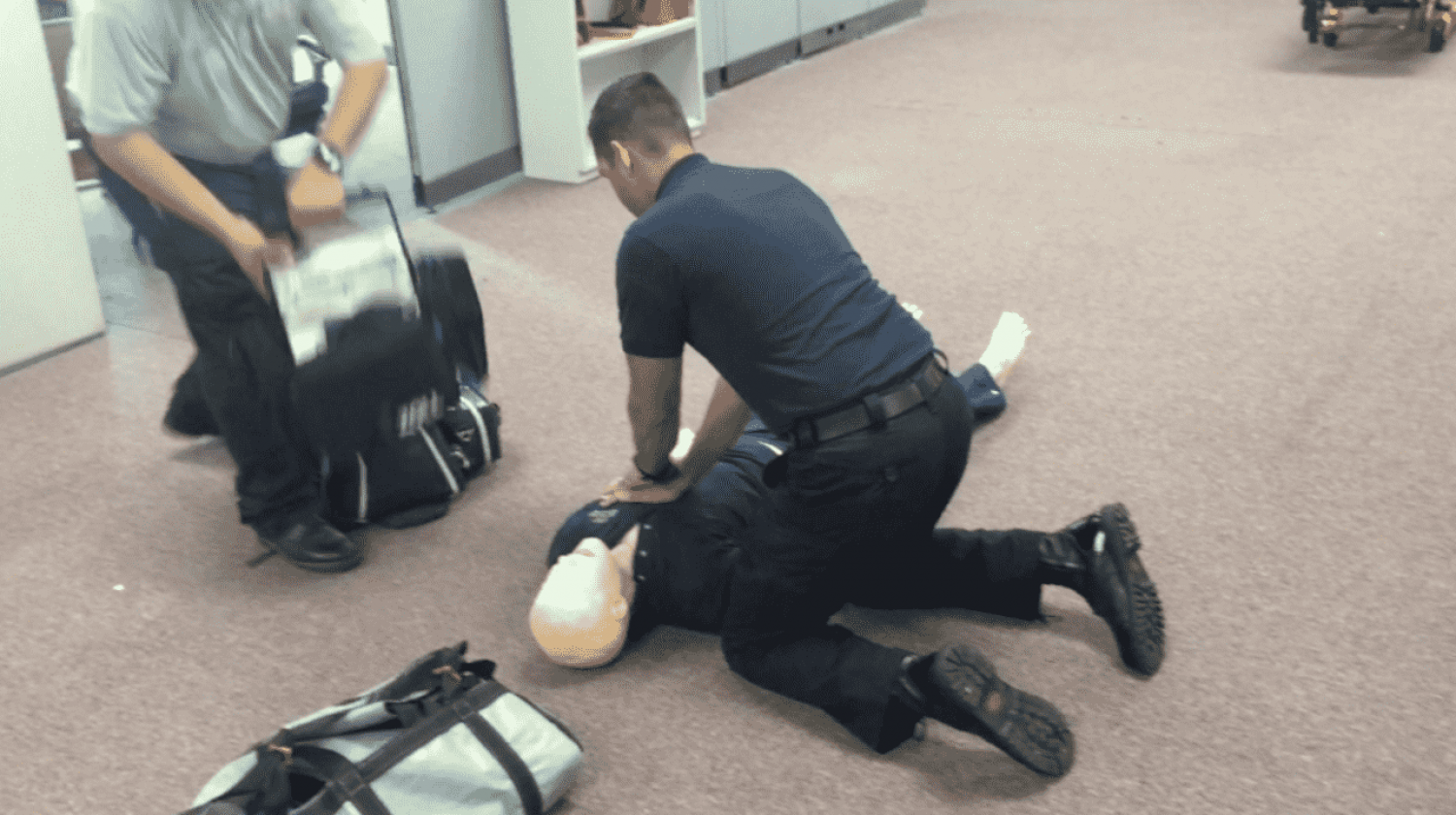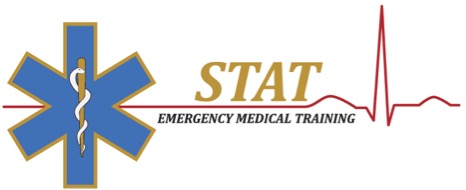

What is an EMT?
Emergency Medical Technicians provide out of hospital emergency medical care and transportation for critical and emergent patients who access the emergency medical services (EMS) system. An EMT is the first of three levels of Emergency Medical Services provider. EMTs have the basic knowledge and skills necessary to stabilize and safely transport patients ranging from non-emergency and routine medical transports to life threatening emergencies. Emergency Medical Technicians function as part of a comprehensive EMS response system, under medical oversight. Emergency Medical Technicians perform interventions with the basic equipment typically found on an ambulance. Emergency Medical Technicians are a critical link between the scene of an emergency and the health care system.
-National EMS scope of practice model
Overview of the EMS Profession
EMS personnel are unique health care professionals in that they provide medical care and transportation in an out-of-hospital setting with medical oversight. EMS personnel are not independent practitioners. While the practice is not independent, it is relatively unsupervised and often has little backup. Therefore, EMS personnel must be able to exercise considerable judgment, problem-solving, and decision-making skills. Most EMS personnel work in emergency medical organizations that respond to emergency calls. Emergency response is typically a local government function (or contracted by local government to a private entity). In most communities, citizens call 9-1-1 when they need emergency medical care, and the appropriate EMS resources are dispatched. EMS personnel respond and provide care to the patient in the setting in which the patient became ill or injured, including the home, field, work, industrial, and recreational settings. In the case of emergency calls, EMS personnel are unique in that they typically have a "duty to act." Many EMS personnel provide medical transportation services for patients requiring medically supervised transportation, either exclusively or in addition to emergency response. These "medical transports" generally do not fall under the "duty to act" responsibility of emergency response. Some EMS personnel provide interfacility transfers of very high acuity patients. In some cases, EMS personnel "stand by" at mass gatherings (for example, concerts, sporting events, etc.) and high-risk activities (for example, fireground operations, etc.). EMS personnel occasionally serve a combined emergency response and occupational/primary care role in remote areas (for example, off-shore oil rigs, wildland fires, etc.) Increasing numbers of EMS personnel are working in more traditional health care settings in the hospital (especially emergency departments), urgent care centers, doctor's offices and long-term care facilities. Finally, EMS personnel are becoming involved in numerous public health initiatives (immunizations, illness and injury prevention programs, etc.). Emergency Medical Services are a local function and organized in a variety of ways. Common models are municipal government (fire-based or third-service) or a contracted service with a private (profit or nonprofit) entity. EMS delivers care as part of a system intended to reduce the morbidity and mortality associated with sudden illnesses and injury.

What can an EMT do?
I. Patient assessment or trauma and medical patients
II. Airway and Breathing Management
a. Insertion of airway adjuncts intended to go into the mouth or nose
b. Use of positive pressure airway ventilation devices such as manually triggered ventilators and automatic transport ventilators
III. Pharmacological Interventions
a. Assist patients in taking their own prescribed medications
b. Administration of the following over-the-counter medications with appropriate medical oversight:i. Oral glucose for suspected low blood sugar
ii. Aspirin and nitroglycerine for chest pain
iii. Oxygen
iv. Epinephrine for allergic reactions
v. Albuterol for asthma
vi. Narcan for narcotic overdoses
IV. Trauma Care
a. Dressing traumatic injuries and woundsi. Bleeding managementb. Splinting of suspected bone fractures
V. Cardiac arrest management
a. Performing CPR
b. Use of an Automatic External Defibrillator
How do you become an EMT?
I. Enroll in an Accredited EMT Program
II. Complete the training course
III. Pass a state administered practical examination
IV. Pass the written certification exam with the Nation Registry of EMTs
V. Apply for state licensure
STAT Emergency Medical Training
STAT Emergency Medical Training in Dartmouth Massachusetts is the training division of STAT Ambulance Incorporated. STAT Ambulance has been the primary municipal 911 provider in Dartmouth for over 30 years. At our new, state-of-the-art facility, we offer EMT training programs, as well as continuing education for emergency medical providers and healthcare professionals.
A team of industry-experienced educators impart their knowledge to students and prepare them to become certified EMTs. They have years of experience in Emergency Medical Services, providing initial 911 services for local municipalities. What they do, and what they know, has saved many lives throughout their career. Their goal is to teach other individuals the techniques that will help them become EMTs and how to further their EMS careers.
What does the program entail?
The approximately 150 hour program includes, but is not limited to, lectures, hands-on application, skills labs, simulations, and use of interactive training equipment. Classes are Tuesday and Thursday nights from 6:00pm to 10:00pm, and every Saturday from 9:00am until 4:30pm.
- America Heart Association CPR Certification
- Airway Management & Oxygen Therapy
- Anatomy and Physiology
- Cardiac Arrest with use of an Automated External Defibrillator
- Cardiovascular & Respiratory Emergencies
- Fractures & Spinal Injuries
- Medical & Traumatic Emergencies
- Pharmacology
- Transport Operations
- Trauma & Bleeding & Shock
The cost of the EMT program at STAT Emergency Medical Training is $1500 and includes the following:
- Textbook
- Online resource code associated with the textbook
- AHA CPR certification
- At least 10 hours internship ambulance ride time with the town of Dartmouth 911 rescue
- NREMT written examination preparation
- Massachusetts state practical examination preparation
- The cost of the program does NOT include the following:
- NREMT written examination ($80 per exam taken within 1 year of course completion)
- Massachusetts state practical examination ($200 due at the time of testing approx. 1-2 weeks after course completion)
- State registration fee (varies per state, for example, Massachusetts is $150)
How to apply
Submit an online application with $300 deposit
